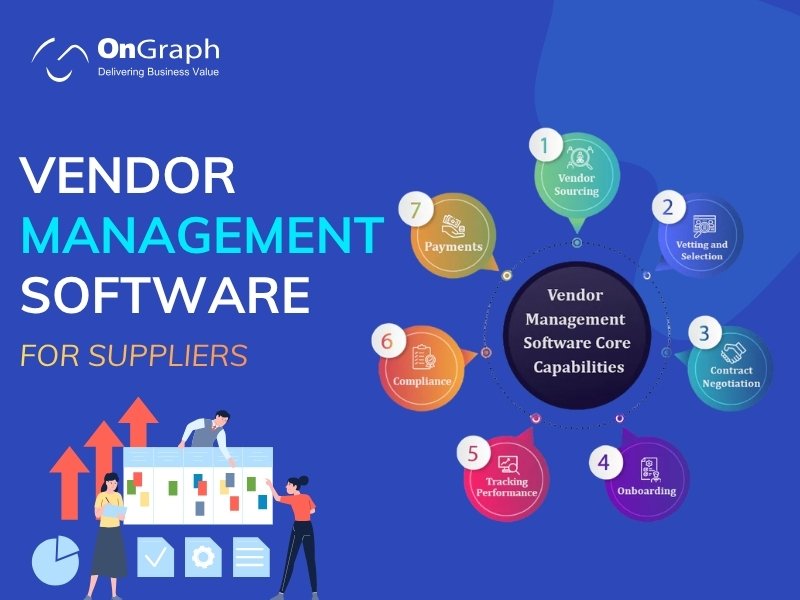In this article
- What Is Cross-Platform Mobile App Development?
- Why Businesses Prefer Cross-Platform Development in 2025?
- Top Cross-Platform Mobile App Development Frameworks
- Choosing the Right Framework: Key Factors
- Emerging Trends in Cross-Platform Development
- Partnering with the Right Development Team
- Our Recommendation
- Final Thoughts
In today’s fast-paced digital world, businesses can no longer afford to build separate mobile apps for Android and iOS platforms. The demand for rapid development, wider reach, and cost efficiency has made Cross Platform App Development Frameworks the preferred choice for startups and enterprises looking to streamline mobile app delivery across multiple platforms.
But with dozens of frameworks available, how do you choose the best one for your needs? This guide explores the top cross-platform app development frameworks, their pros and cons, and how to leverage them effectively.
We’ll also highlight how a trusted cross-platform mobile application development company can help you build scalable and high-performing apps using these tools.
What Is Cross-Platform Mobile App Development?
Cross-platform mobile app development is the process of creating software applications that run on multiple operating systems (primarily Android and iOS) using a single codebase.
This approach enables faster deployment, a unified user experience, and lower maintenance costs—making it a top choice for businesses aiming to scale quickly.
Unlike native development (which uses separate languages and tools for Android and iOS), cross-platform mobile application development uses frameworks that abstract away the platform differences, enabling shared UI and business logic.
Why Businesses Prefer Cross-Platform Development in 2025
Whether you’re a startup looking to launch quickly or an enterprise aiming to reduce tech debt, cross-platform solutions offer significant advantages:
- Faster time-to-market using reusable code
- Lower development costs
- Unified user experience across devices
- Streamlined updates and bug fixes
- Access to a larger developer talent pool
If you’re planning to launch your app soon, partnering with a seasoned cross-platform mobile app development company ensures quality and scalability right from the start.
Top Cross-Platform Mobile App Development Frameworks
Let’s explore the most powerful frameworks in 2025, based on performance, community support, and enterprise adoption.
1. Flutter (by Google)
Language: Dart
Best for: Beautiful UIs, native performance, fast development
Type: Open-source SDK
Why it stands out:
Flutter is the fastest-growing framework in the cross platform mobile app development company ecosystem. It compiles directly to native ARM code and uses its own rendering engine for UI, enabling pixel-perfect designs on both iOS and Android.
Strengths:
- Native-like performance
- Rich widget libraries for custom UI
- Strong Google backing
- Fast development with hot reload
Weaknesses:
- Dart has a smaller developer base
- Larger app size compared to native
Popular apps built with Flutter:
Google Ads, Alibaba, Reflectly
2. React Native (by Meta)
Language: JavaScript
Best for: Apps with high user engagement and social interaction
Type: Open-source UI framework
Why it stands out:
React Native allows JavaScript developers to build native apps using React. It supports third-party plugins and native modules for enhanced customization, making it ideal for multi platform mobile application development.
Strengths:
- Reusable components
- Strong community support
- Access to native APIs
- Fast refresh and hot reloading
Weaknesses:
- Complex debugging
- UI performance may lag for highly animated apps
Popular apps built with React Native:
Instagram, Facebook, Pinterest, Discord
3. Xamarin (by Microsoft)
Language: C#
Best for: Enterprise-grade apps with shared logic and .NET integration
Type: Open-source
Why it stands out:
Xamarin allows code sharing across platforms using the .NET ecosystem. It’s ideal for cross platform native mobile application development, especially when targeting iOS and Android with secure backend systems.
Strengths:
- Deep integration with Visual Studio
- Native performance
- Secure and enterprise-ready
- Shared codebase for logic and UI
Weaknesses:
- Slower updates for new OS features
- Less vibrant UI support than Flutter or React Native
Popular apps built with Xamarin:
UPS Mobile, Alaska Airlines, The World Bank
4. Ionic
Language: JavaScript (Angular, React, or Vue)
Best for: MVPs, hybrid apps, web-mobile experiences
Type: Open-source SDK
Why it stands out:
Ionic uses web technologies (HTML, CSS, JS) to build mobile apps and Progressive Web Apps (PWAs). It’s a solid choice for companies seeking cross platform mobile app development services that span web and mobile.
Strengths:
- Familiar tech stack
- Component-rich UI library
- Easy to learn and deploy
- Large community
Weaknesses:
- Performance is not as strong as native or Flutter
- Relies on WebView
Popular apps built with Ionic:
JustWatch, McDonald’s Türkiye, Sworkit
5. NativeScript
Language: JavaScript/TypeScript
Best for: Apps requiring full native API access
Type: Open-source
Why it stands out:
NativeScript allows direct access to native APIs via JavaScript, without needing a WebView. It’s a great choice when you need native capabilities in a shared code environment.
Strengths:
- Native-like performance
- Reuse of Angular, Vue, or Vanilla JS
- Full access to native APIs
Weaknesses:
- Smaller ecosystem than Flutter or React Native
- Limited plugin availability
Popular apps built with NativeScript:
Workbox, Strudel, BitPoints Wallet
6. Cordova / PhoneGap (Adobe)
Language: HTML, CSS, JS
Best for: Lightweight hybrid apps
Type: Open-source
Why it stands out:
Cordova was one of the first cross platform mobile app development tools, allowing web developers to build mobile apps. It uses a WebView wrapper to render the app and access native APIs through plugins.
Strengths:
- Easy to learn
- Reuse web development skills
- A large number of plugins
Weaknesses:
- Poor performance for animation-heavy apps
- Outdated in 2025 with limited updates
Popular apps built with Cordova:
Untappd, FanReact
7. Unity (for Games and AR/VR)
Language: C#
Best for: Game development, 3D simulations, AR/VR
Type: Cross-platform game engine
Why it stands out:
Unity is the leader in cross-platform game development. It’s used by indie developers and major studios alike to create 2D/3D mobile games that run on both Android and iOS—and even desktops and consoles.
Strengths:
- Advanced rendering engine
- Extensive asset store
- Support for ARKit and ARCore
Weaknesses:
- Steep learning curve for non-gamers
- Not ideal for general business apps
Popular games built with Unity:
Pokémon GO, Monument Valley, Among Us
8. Electron (for Desktop + Mobile Web)
Language: JavaScript, HTML, CSS
Best for: Desktop-like web apps with cross-platform deployment
Type: Open-source framework
Why it stands out:
Although not a traditional mobile app framework, Electron is worth mentioning for developers targeting mobile-web-desktop cross-compatibility. It helps deliver cross platform solutions for mobile app development, extended to desktops.
Strengths:
- Single codebase for desktop and mobile web
- Powerful Node.js integration
- Ideal for SaaS tools
Weaknesses:
- Heavy resource consumption
- Not suited for mobile-first apps
Popular apps built with Electron:
Slack, Visual Studio Code, Figma
9. Kivy (Python-based)
Language: Python
Best for: Python developers building cross-platform GUI apps
Type: Open-source
Why it stands out:
Kivy is a niche yet powerful tool allowing developers to create mobile apps using Python. While not widely adopted in enterprise cross platform mobile application development, it’s perfect for academic or research projects.
Strengths:
- Great for Python developers
- Good for rapid prototyping
- Touch-enabled and multi-platform
Weaknesses:
- Less support for mobile device APIs
- Steeper UI design process
Popular apps built with Kivy:
Kivy Catalog, TicTacTouch
Also read- 9 Top Python Frameworks for App Development in 2025
10. Framework7
Language: HTML, CSS, JS
Best for: Hybrid apps mimicking iOS design
Type: Open-source UI framework
Why it stands out:
Framework7 is excellent for building iOS-style hybrid apps. It’s lightweight, performance-friendly, and a good fit for building ios and android cross platform development projects with a focus on UI consistency.
Strengths:
- iOS and Material Design themes
- Strong routing and state management
- Smooth animation support
Weaknesses:
- Small developer community
- Not ideal for complex backend apps
Popular apps built with Framework7:
Kitchen Stories, Wappler
Choosing the Right Framework: Key Factors
When selecting from these cross-platform mobile app development tools, consider the following:
- App type & complexity (e.g., UI-heavy vs. data-heavy)
- Performance needs (near-native vs. web-based)
- Team skill set (JavaScript, Dart, C#)
- Integration requirements (native modules, sensors)
- Time and budget
If you’re uncertain, a reliable cross-platform mobile application development company can evaluate your use case and recommend the right stack.
Emerging Trends in Cross-Platform Development
As businesses look to modernize, these trends are driving growth in cross-platform development:
- AI-driven UI generation tools
- No-code/low-code frameworks for faster deployment
- Composable architectures
- Use of machine learning models in mobile apps
- Growing demand for iOS and Android cross-platform development in fintech and healthtech
Partnering with the Right Development Team
Choosing the right partner can make or break your app’s success. An experienced cross-platform mobile app development services provider will help you:
- Design user-centric UIs
- Choose the best framework
- Ensure backend scalability
- Optimize for app store performance
- Provide long-term support and updates
Look for a team with a strong portfolio in cross-platform solutions for mobile app development, and proven expertise in launching apps across sectors like travel, real estate, and wellness.
Also read- Top 14 Backend Frameworks in 2025 for Web Development
Our Recommendation
If you’re aiming to develop cross platform mobile apps that are robust, scalable, and user-friendly, frameworks like Flutter and React Native are currently leading the way.
However, the right choice depends on your business goals, resources, and feature needs.
Final Thoughts
The rise of Cross Platform App Development Frameworks has made it easier than ever to build high-quality apps that perform well across multiple platforms.
From early-stage startups to enterprise applications, multi-platform mobile application development unlocks speed, efficiency, and cost savings.
To stay ahead in the competitive app market, team up with a professional cross platform mobile application development company that understands the latest tools and trends.
FAQs
Flutter and React Native remain the most popular due to community support and near-native performance.
Yes, frameworks like Flutter, React Native, and Xamarin allow this.
You save on development, testing, and maintenance since you don’t need separate teams for each platform.
With the right development practices, cross-platform apps can be just as secure as native ones.
Look for proven experience, portfolio diversity, client testimonials, and post-launch support services.
About the Author
Let’s Create Something Great Together!
Latest Blog















